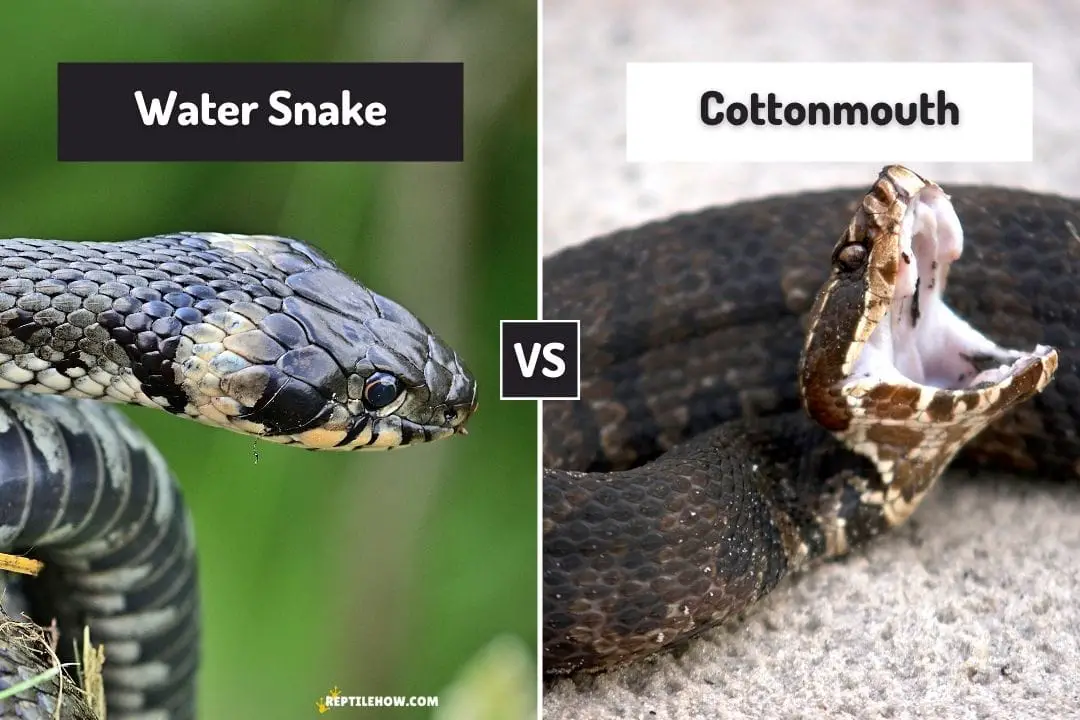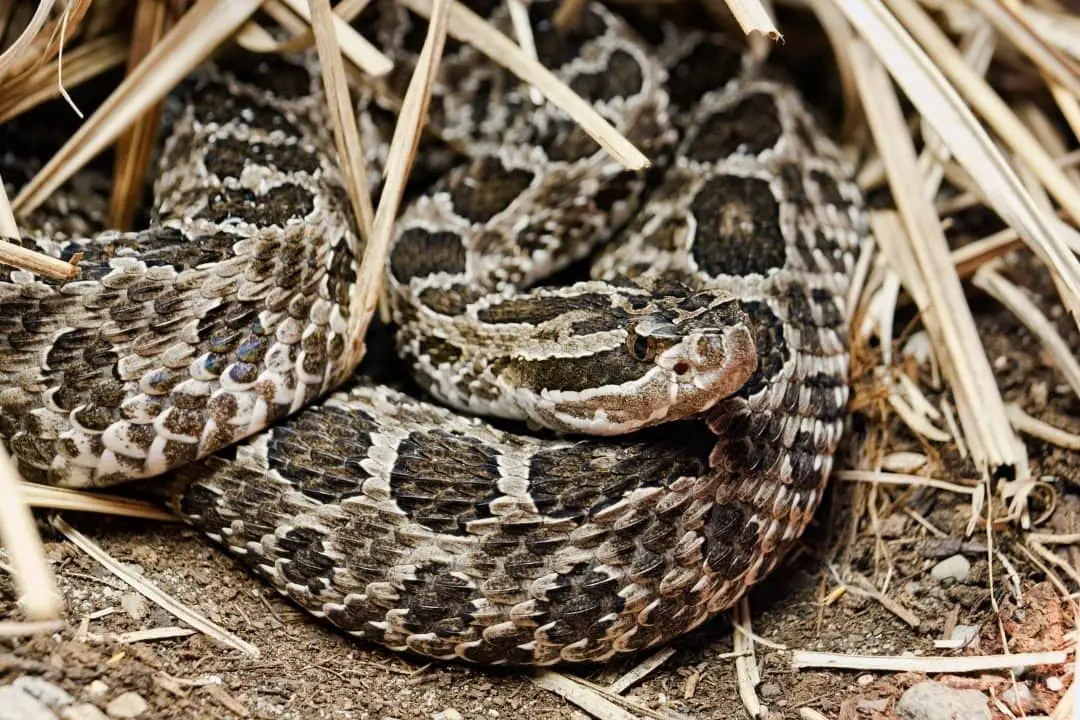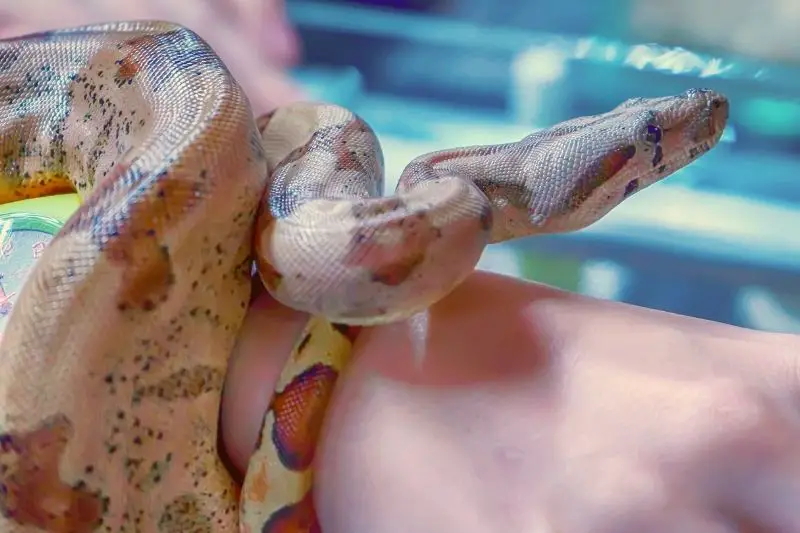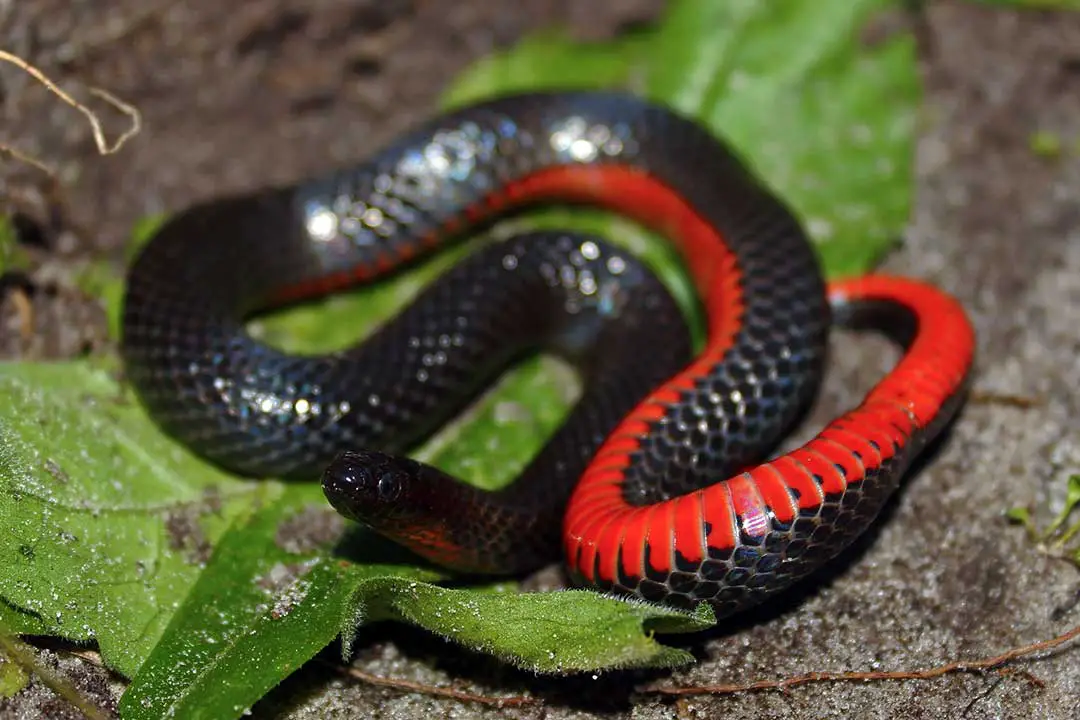The cottonmouth (Agkistrodon piscivorus) is a venomous pit viper that is commonly found near water. It is easily confused for members of the genus Nerodia which are commonly called watersnakes.
There are some easy ways to tell these snakes apart. We will go over differences you can spot from a distance with live animals and then go into differences that you could only see up close.
Never approach a live snake if you suspect it may be venomous. Never attempt to handle a venomous snake without training.
As a general rule, cottonmouths have heads that are much larger than the neck. They also have blocky heads, slit pupils, and thick bodies.
Head and Neck
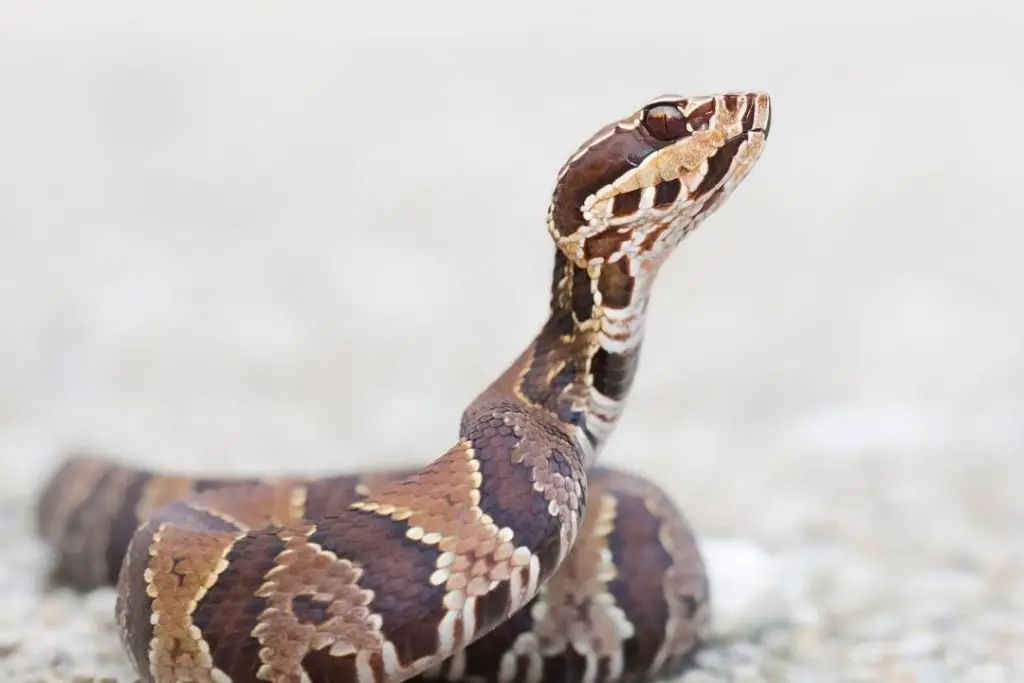
The fastest way to tell apart a cottonmouth from a watersnake is to check the head. Cottonmouths have big, blocky heads that are very distinct from the head.
They have large jowls on the side of the head that contain the venom glands. Even young snakes will have a distinct head and thin neck along with a blocky head.
Watersnakes do have large heads, but the head is not much wider than the neck. Some species even have heads that blend into the neck.
Some watersnakes will flatten and spread out their heads when they feel threatened. This can make them easy to confuse with the cottonmouth.
However, just look at how thick the head is. A watersnake that is flattening its head will seem to have a very thin head. If you see the snake with its mouth open, a cottonmouth has a pale mouth that is nearly white.
Cottonmouths will display this pale mouth when they feel threatened.
Another thing to note if you are looking at a picture of the snake is very close is the eyes. Cottonmouths have elliptical pupils like a cat, while watersnakes have round pupils in eyes that are high on the head. As the cottonmouth is a pit viper, it has pits on the face to sense heat. Their eyes are also not visible from above.
Color
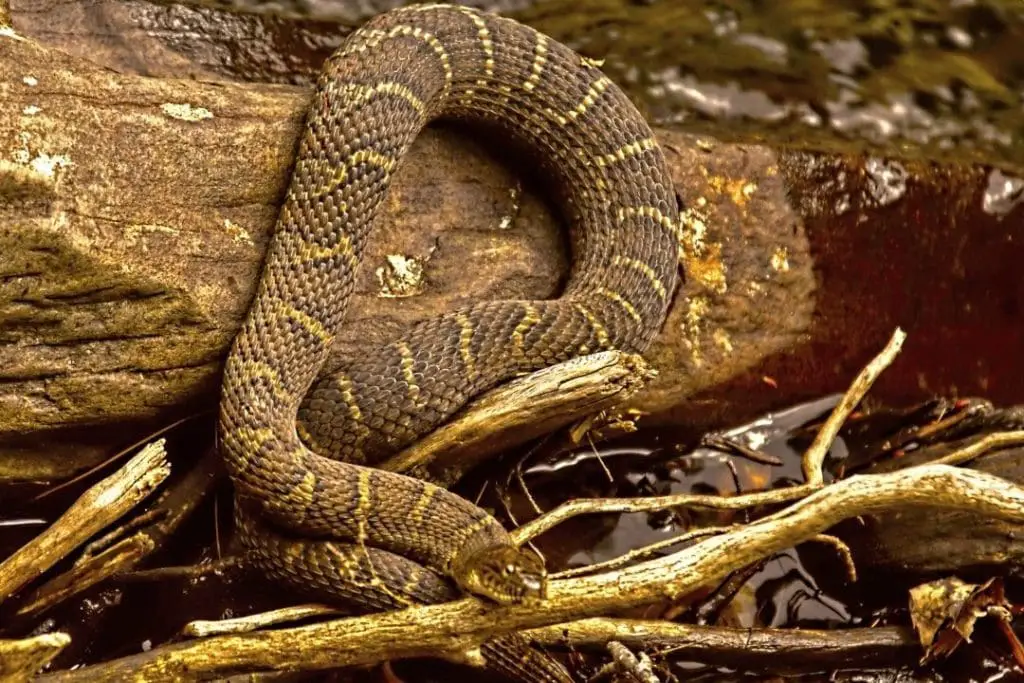
Adult cottonmouths are typically dark, while watersnakes can vary based on the exact species.
Make sure you familiarize yourself with the local snakes to help you identify the snakes more easily. Juvenile cottonmouths are banded and are typically a brown color.
Watersnakes can be many different colors. Some can be brown, but they can come in many colors including green. Many have a solid color, but a few species are banded. Juvenile cottonmouths have a yellow tail tip.
This fades to black with age. Their tail is also pretty thick and short. The watersnake has a longer tail that is the same color as the rest of the snake.
Range
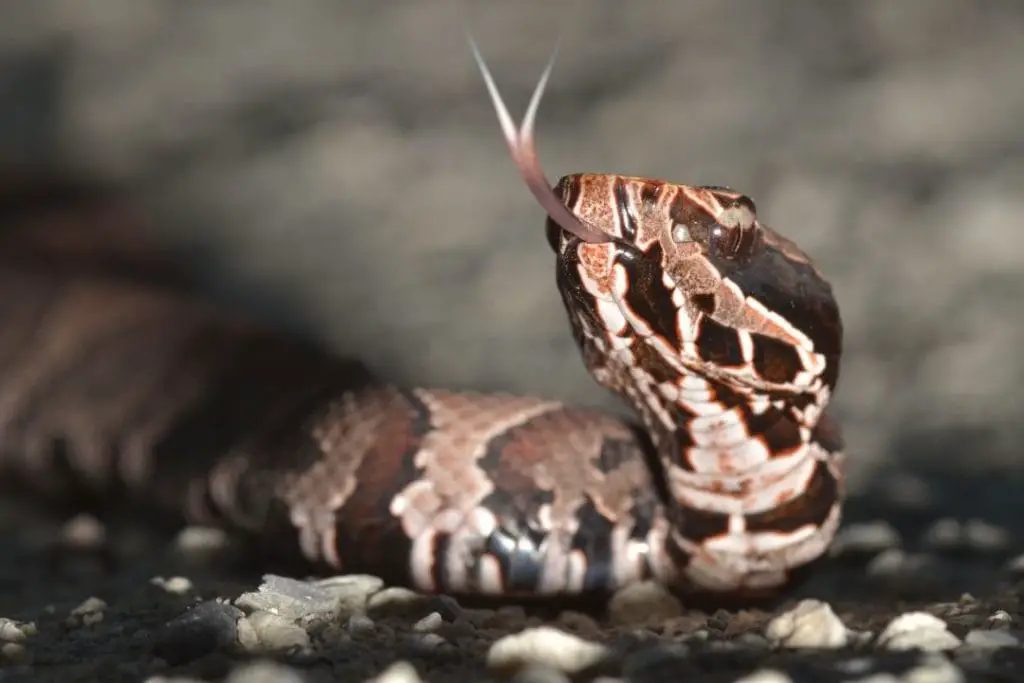
Watersnakes are much more widely spread than cottonmouths. Most cottonmouths live in the southeastern area of the United States.
The Florida cottonmouth is found in Florida and the southern parts of Georgia.
The eastern cottonmouth is found from the Carolinas, Virginia, and Georgia.
The western cottonmouth is found from southern Alabama to East Texas along the Gulf Coast and north to Oklahoma, Missouri, Illinois, Indiana, Nebraska, and Kentucky. If you are outside of their range, you are likely not looking at a cottonmouth.
Behavior
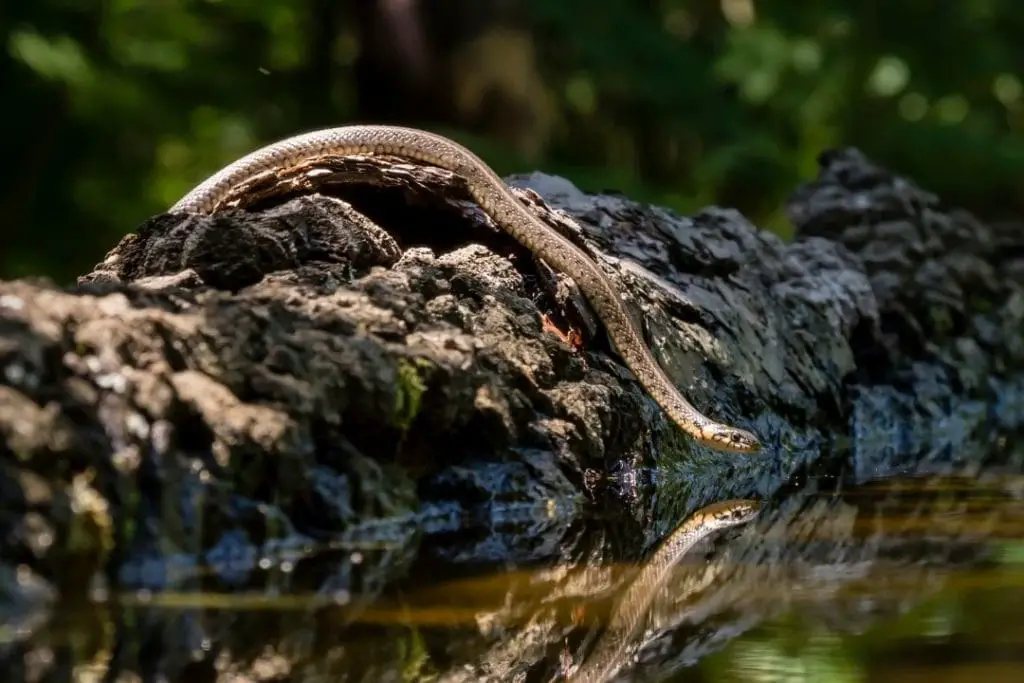
Behavior is a very easy tell for these snakes. Cottonmouths have unique defensive behavior. The snake will coil up and open its mouth to display the characteristic white color.
They will generally try to flee if they have the opportunity. However, they will either stand their ground or make short charges towards someone that is harassing them.
They spend most of their time curled up and they will only lash out if stressed. As ambush predators, they prefer to move as little as possible.
Cottonmouths can also struggle to move effectively on land. They can move in a jerky manner if they are far from the water and are trying to flee.
Watersnakes have different behaviors. The first thing they will do is flatten themselves to appear bigger. They will also try to flee at first.
Watersnakes move more easily on land. Some species can be found much further from water. They are also good climbers and may perch up to 20 feet above the water on a branch.
Cottonmouths typically gape to make themselves more visible. This behavior is a sure warning of a bite. The two snakes have resident swimming styles as well.
Cottonmouths swim with the head up and the body sitting higher in the water. The watersnake will have its body submerged while swimming.
Both snakes can dive and will do so when hunting for their preferred aquatic prey. Cottonmouths are also more willing to eat rodent prey than watersnakes on average. Since watersnakes eat their prey alive, they are at risk of serious injury from rodent prey.
Other Differences
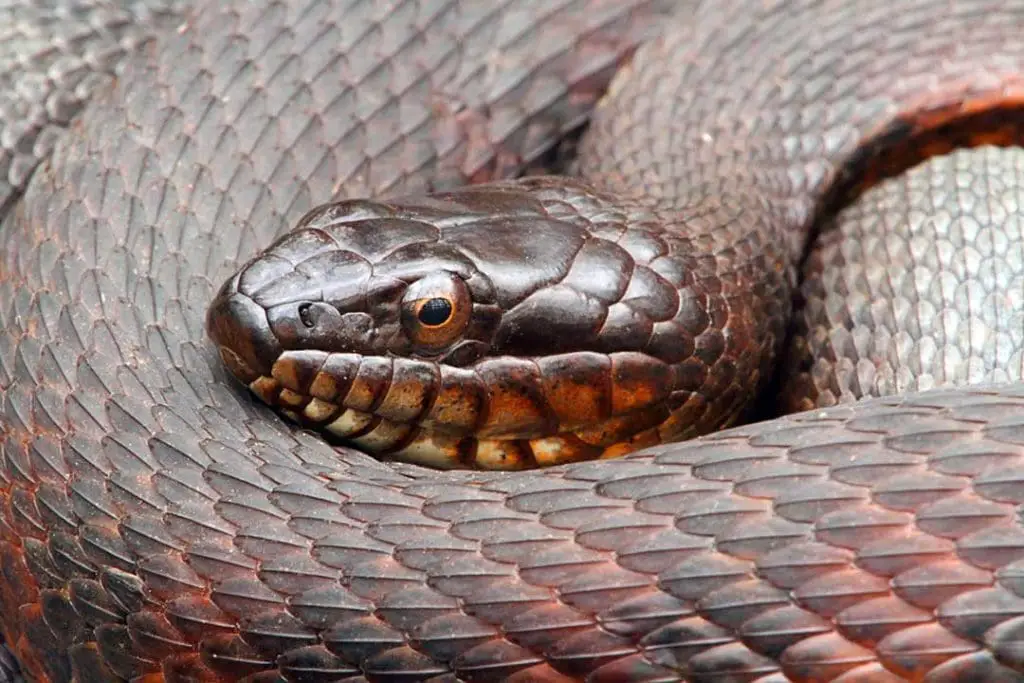
These differences are not particularly useful for telling the snakes apart since you need to get very close to see these differences. Never handle a snake you feel may be venomous.
Even if it is dead, muscle spasms can result in a bite even after death. One important difference is on the underside of the snake.
Snakes have a scale known as the anal plate right above the tail. In watersnakes, they have two rows of scales under the anal plate.
This continues down the long tail. Cottonmouths have only one row of scales. Depending on the exact species of watersnake, their belly may also be different.
The plain-bellied watersnake has no markings on the belly. Some adult cottonmouths will have a “Hershey kiss” pattern on the sides right above the central scales. They also typically have patterning on the belly.
What to Do if You Encounter a Snake
The best course of action if you encounter a wild snake is to leave it alone. Give the snake a wide berth and it should leave you alone. Attempting to kill a wild snake is a very bad idea.
You are very likely to be bitten. It is also incredibly cruel to kill an animal that wants nothing to do with you. Despite the Hollywood myths, snakes are not aggressive and are typically very afraid of humans.
Conclusion
We hope this has helped you learn more anot identifying cottonmouths. If you have any questions or comments, please leave them below.
